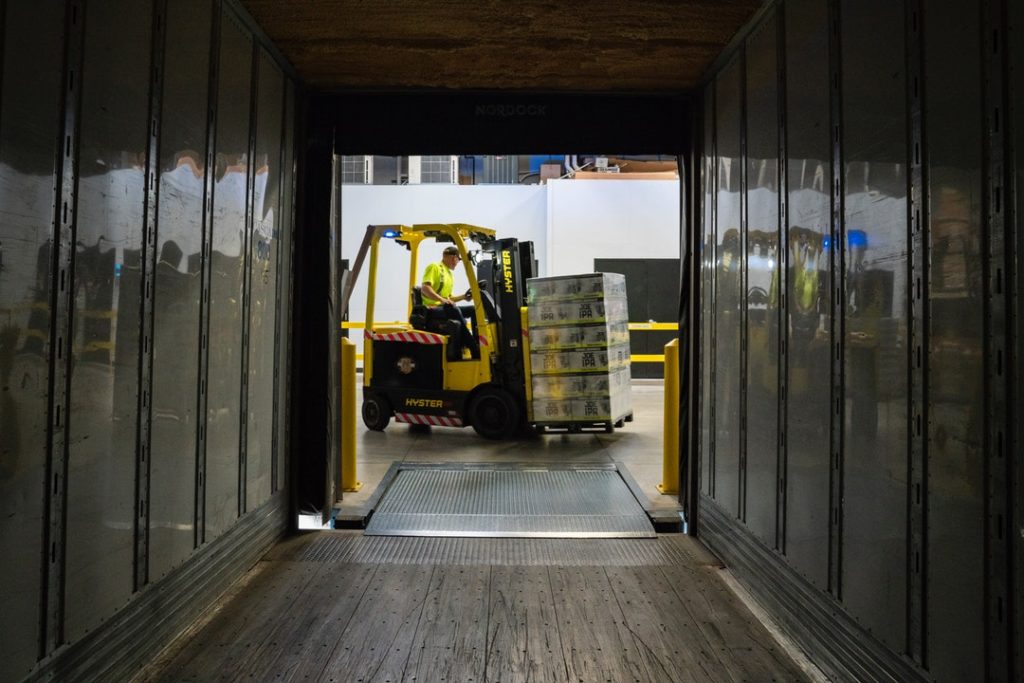
When your employees operate a forklift you want them to practice good forklift safety. Have all of your operators completed forklift safety training?
Read on to learn more from these forklift safety tips and keep your workforce working well.
Why Forklift Safety Is So Important
The work done on a daily basis by your forklift could never be accomplished by humans. Yet, it’s important to remember that a forklift is a powerful machine and if used incorrectly it has the potential to be quite dangerous.
In 2019, 8,140 workers suffered nonfatal injuries. 79 workers had fatal injuries from a forklift accident. The average injury from a forklift caused the worker to miss 16 days of work.
While a good many operators use a forklift on a daily basis with no issue, it’s significant to remember the average forklift weighs more than three times an average-sized car. If used unsafely, there could be a real potential for danger.
Forklift Hazards
It’s worth noting the half of all forklift accidents are completely preventable. With the right training and safety precautions, forklift accidents can be avoided. Let’s take a look at the most common types of accidents as a way to avoid them happening to you.
Overturning Forklifts
Overturning forklifts account for a significant number of the fatalities that happen with forklift accidents. The most common reasons for a forklift overturning include:
- Uneven weight distribution
- Excess loads
- Unusual loads
- High heights for heavy loads
- Obstructed operator view
The instinct of a driver might be to want to try to jump off if it feels like the forklift is overturning. In fact, the operator is safer remaining on the forklift and leaning away from the direction the forklift is turning.
Pinning and Crushing Accidents
Another unfortunate type of accident is when workers get crushed or pinned by a forklift. This most commonly happens when a worker is in the blindspot of a forklift operator or they get caught under a forklift that is overturned.
One of the best ways to prevent this type of accident is to have carefully laid out workspaces so that pedestrian workers and machinery don’t cross paths.
Loads Falling From a Forklift
Another potential for injury comes when the load being carried falls from the forklift. If the pallet is not properly on the forklift or the load is not even distributed this can cause a load to fall.
Blind Spots
One of the many things a forklift operator needs to learn when participating in forklift safety training is about the blind spots that are created from carrying a load. The load can create blind spots for the operator.
Further, the forklift’s back-end tends to swing wide when making a turn. This can create a danger for those not on the forklift and in the path of the moving machinery.
Speed of the Forklift
Forklifts carrying heavy loads create a real danger when not driving at safe speeds. They take time to stop and if the stop happens too quickly there is the risk of the load falling off the machine overturning.
Forklift Safety Protocols
A trained forklift driver will follow many steps and procedures to maintain safety standards while operating a forklift. Let’s take a look at the things a safe driver will do.
Pre-Operation Inspections
While forklifts are sturdy machines, they need to be inspected before use. An operator should have a regular checklist to inspect the machine. Here are somethings that should be inspected daily:
- Controls
- Fuel, engine oil, and radiator water levels
- Wheels and tires
- Electrolyte levels and cells
- Chain anchor pins
- Hydraulic hose reels
- Control levers
- Forks
- Horn
- Brakes
- Clutch and gear shifts
- All lights and gauges
- Steering
- Lift and tilt mechanisms
- Seat belt
- Reverse beeper and warning lights
Because forklifts do heavy work, inspections are important to note any unusual wear and tear that might create a safety risk.
Pallet Handling and Loading
One thing an operator must do is make certain the forks on the machine are level and the pallet is sitting on them level. If this doesn’t happen there is the risk the load could tip.
An operator needs to know the maximum amount a forklift can lift and how high it can lift that load. Exceeding those specifications creates a safety risk.
Raising the Load
Once the load is in place and moved, it’s important to know when and how to lift the load and place it in its new location. When lifting a load to a new height the driver should bring the load straight up, and then tilt it back slightly. The slight tilt back helps to accommodate the instability created with the height of the load.
Drivers should not raise a load until they are completely stopped and the machine has the brakes locked. Loads should never be lifted and then have a human go under the lifted load.
Steering
Remember, that forklifts can’t make fast stops. Their turns can be wide when taking corners.
When loading and unloading trailers it’s important that the operator know how to approach a trailer safely with the machine.
Safety Equipment
OSHA requires that employers provide workers with the appropriate safety gear. Reflective clothing, hard hats, and safety goggles are just some of the personal protective gear needed.
Practice Good Forklift Safety
While forklifts are an important member of your warehouse or worksite team, they require some real skill to handle. It’s important your workers know the necessary forklift safety protocols to operate and be around forklift machinery. If everyone uses good safety measures, workers remain safe.
To learn more about our fleet of used forklifts available or to get information on forklift operator training, contact us today.
